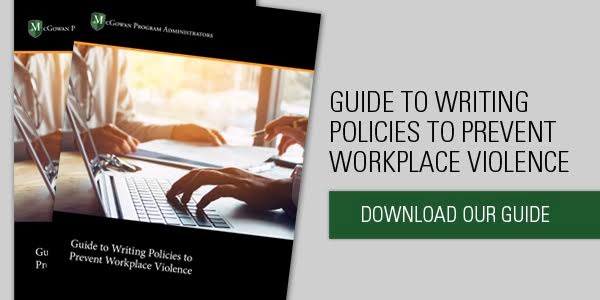Many of them had drug problems, mental health issues, and run-ins with the law. They were angry and wanted revenge. Most of them communicated their intentions before they attacked. All 28 were men.
These facts represent common threads in 28 public mass attacks that erupted in the United States last year, killing 147 people and injuring nearly 700 more. “Mass Attacks in Public Spaces — 2017,” a report by the U.S. Secret Service National Threat Assessment Center (NTAC), analyzed these attacks in the hope of finding behavioral red flags that could identify troubled, violence-prone people before they strike.
These are the kinds of facts that leaders of schools, businesses, government agencies, and other organizations should keep in mind as they develop policies to grapple with the risks of workplace violence and the threat of mass attacks.
Four common themes emerged from the NTAC report:
Grudges and grievances
Nearly half of the attackers had grievances in three categories:
- Workplace: 21% perceived they had been wronged at work
- Domestic: 18% had household issues
- Personal: 7% said they were bullied or disliked
In addition, just under 40% had troublesome fixations. “Attackers’ fixations often carried an angry or emotional undertone and revolved around several themes, including personal vendettas, romantic conflicts, personal failures, perceived injustices, delusions, sociopolitical ideologies, or other incidents of mass violence,” the report said.
Severe stressors
All of the attackers suffered from at least one severe stressor in the five years before the attack, according to the report.
Of those, more than half endured financial reversals such as losing a job, living in homeless shelters, going out of business, being evicted, or having wages garnished. Other stressors included “spousal estrangements, divorces, romantic breakups, rejected proposals, physical or emotional abuse, or the death of a parent,” the report said.
Many of the attackers were previously reported to the police but not necessarily arrested, and some had trouble at school or suffered from health problems.
Mental health, substance abuse, violence, and criminality
Most of the attackers had trouble with drug or alcohol abuse. Mental symptoms were pervasive. Most had criminal records including violence.
- 82% showed evidence of aggressive narcissism, characterized by rigidness, hostility, or extreme self-centeredness.
- 71% had criminal charges in their background; 54% had a history of violence.
- 32% had a history of domestic violence.
- 54% were known to use illicit drugs and abuse substances.
Regarding substance usage, “This abuse, which included alcohol and marijuana, was evidenced by such factors as the attacker receiving treatment for the abuse, suffering legal consequences, or having significant problems in their personal lives stemming from the abuse,” the report said.
Concerning communications
Nearly eight out of ten attackers said, wrote, or did things that gave hints to their violent intentions.
- 75% communicated messages that caused concern.
- 50% had a history of making threats.
- 46% did things that raised concerns about their safety or the safety of those around them.
- 36% specifically threatened the target of their attacks.
“Those who expressed concern included parents, siblings, current or former romantic partners, friends, neighbors, teachers, classmates, work associates, community members, and law enforcement,” the report said.
Interpreting these warnings
The challenge in addressing these threats is that millions of people suffer from problems that could lead to violence, but only a tiny few launch deadly mass attacks. While the risk of becoming a victim appears to be increasing every year and is exceedingly small, those who do can suffer terrible losses.
McGowan Program Administrators developed our Active Shooter/Workplace Violence Insurance programs to help organizations manage these risks and make sure they are prepared when violence strikes. We also encourage companies to develop robust programs to identify troubled individuals in their midst and pursue interventions when their behavior sets off warning bells.
We’ll never know how many attacks were prevented by caring people who paid attention and did the right thing. But it’s certainly better to act than to suffer the consequences of inaction.
Related articles
6 Hidden Costs of Workplace Violence
11 Things to Look for in an Active Shooter Insurance Policy
What Happens in the Aftermath of an Active Shooter Situation?



